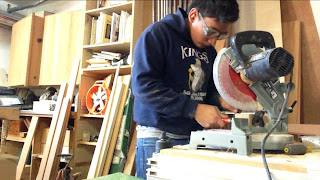(1) Positive Statement
What are you most proud of in your 2-Hour Presentation and/or your senior project? Why?
I am most proud of the effort, commitment, and activities because I did put a lot of thought into my activities and showing connection between my answers, activities, and my essential question. I felt like I did a good job and showing the connection and helping the class understand my topic, essential question, and answers very well.
a. What assessment would you give yourself on your 2-Hour Presentation (self-assessment)?
P
b. What assessment would you give yourself on your overall senior project (self-assessment)?
P
(3) What worked for you in your senior project?
What worked for me was learning the content and putting together the project because I knew my topic so well, and had a lot of experience with it, so I felt really confident. The dedication, commitment, and work I put into it worked for me as well because although it was a lot of work, I liked my topic a lot over all, and was able to enjoy it more then anything.
(4) (What didn't work) If you had a time machine, what would have you done differently to improve your senior project if you could go back in time?
What did not work for me was the lack of time, I wish I had more time to explain my topic. And I also wished I could have explained my answers better and used more visuals. I dont feel as if I did bad, but I do feel that more use of visual for my answers one and two, and a better explanation for my answers would have made it easier to understand sooner. So I would change my power point a bit to hit more specific aspects of my answers and use more visuals to better understand the content sooner.
(5) Finding Value
How has the senior project been helpful to you in your future endeavors? Be specific and use examples.
My senior project has been helpful to me in my future endeavors by helping me realize the potential I have, and how much knowledge I have gained. My projected help me discover my product, which was having more patients and having better problem solving skills. I feel that this project helped me in unbelievable ways, and taught me how to be a better facilitator and take charge in what I do. Also, I learned what commitment and dedication really mean, and in the future I feel that everything I have learned throughout this none month long project, will always be remember and used in my future struggles. I feel as if I can accomplish a lot, and feel confident in myself at preforming difficult task which is a big help to achieve my future goals of going to college and being successful in my career. My independent Component Two proved to me what my product is, and put me to the test because of all the difficult problems I had to face. I learned about how I solve my own problems and realized better ways to solve those problems because of this project. I feel that this is the best example of how my senior project was helpful, and how it will be helpful to my future endeavors.
































